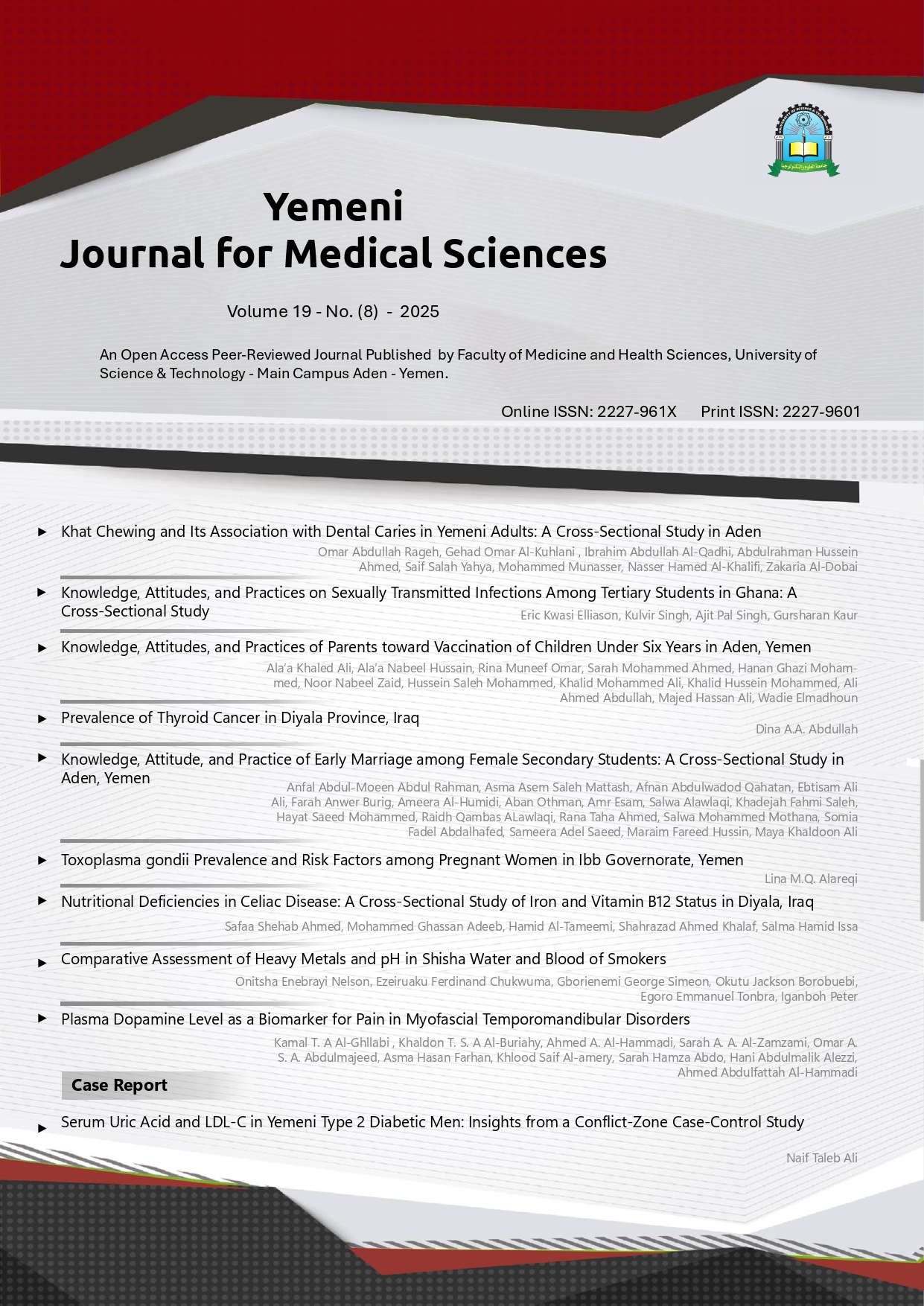Serum Uric Acid and LDL-C in Yemeni Type 2 Diabetic Men: Insights from a Conflict-Zone Case-Control Study
##plugins.themes.bootstrap3.article.main##
Abstract
Background: Type 2 diabetes mellitus (T2DM) is a major public health concern due to its association with various cardiovascular risk factors. Among these risk factors, elevated serum uric acid levels have gained increasing attention as a potential contributor to cardiovascular disease (CVD). While uric acid’s role in dyslipidemia is debated, data from Middle Eastern populations remain scarce.
Objective: This study aimed to investigate the association between serum uric acid levels and certain cardiovascular risk factors, including lipid profile parameters, in male patients with T2DM.
Methods: This case-control study, adapted for conflict-zone conditions, enrolled 100 Yemeni males (50 T2DM and 50 controls) in Al-Dhalea. Fasting blood was analyzed for SUA (uricase-PAP), lipids, and glucose using solar-powered and Barricor tube protocols.
Results: T2DM patients had higher SUA (6.56 vs. 5.13 mg/dL, p<0.001) and LDL-C (114.9 vs. 72.9 mg/dL, p<0.001), with a strong SUA-LDL-C correlation (β=0.58, p=0.002). Triglycerides showed no association (p=0.147).
Conclusion: Elevated SUA is independently associated with LDL-C in Yemeni T2DM males, suggesting SUA as a modifiable CVD risk marker.
##plugins.themes.bootstrap3.article.details##
Type 2 Diabetes Mellitus, Uric Acid, Cardiovascular Risk Factors, Lipid Profile, LDL-C, HDL-C, Body Mass Index, Yemen

This work is licensed under a Creative Commons Attribution 4.0 International License.
YJMS publishes Open Access articles under the Creative Commons Attribution (CC BY) license. If author(s) submit their manuscript for consideration by YJMS, they agree to have the CC BY license applied to their work, which means that it may be reused in any form provided that the author(s) and the journal are properly cited. Under this license, author(s) also preserve the right of reusing the content of their manuscript provided that they cite the YJMS.

 https://orcid.org/0000-0002-2266-1569
https://orcid.org/0000-0002-2266-1569







